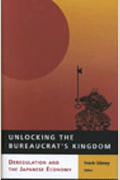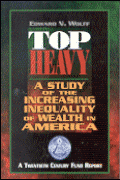What’s the latest thinking in fiscal and monetary policy? The Hutchins Roundup keeps you informed of the latest research, charts, and speeches. Want to receive the Hutchins Roundup as an email? Sign up here to get it in your inbox every Thursday.
Comparing Fed balance sheet reductions and rate hikes
A $2.5-trillion reduction in the Fed’s balance sheet over the next few years is roughly equivalent to a half percentage point increase in the federal funds rate, estimate Edmund Crawley of the Federal Reserve Board and co-authors. Using the Fed’s FRB/US model, the authors simulate a baseline scenario in which the balance sheet declines according to the Fed’s May 2022 plan, while the economy and funds rate follow current market projections. To yield the same macroeconomic outcomes as this scenario, but without any balance sheet runoff, the authors estimate that the funds rate would need to be 56 basis points higher. The authors also find that in the no-runoff scenario, lower Treasury term premia resulting from the Fed’s larger balance sheet would roughly offset the higher funds rate path, resulting in similar real and nominal 10-year yields as the Fed’s current plan. The authors note various caveats to their analysis, including potential asymmetry between balance sheet reductions and expansions, changing durations of assets held by the public, and the possibility of other transmission channels of the balance sheet on financial conditions.
Racial wealth disparity fell sharply after Emancipation but remains large
Using historical census, state tax, and consumer survey data, Ellora Derenoncourt of Princeton and co-authors document the evolution of the U.S. white-Black wealth disparity over the 1860-2020 period. The authors find that the racial wealth gap in the U.S. narrowed sharply in the 50-year period that followed the abolition of slavery, reducing the white-to-Black ratio of per capita wealth from 60-to-1 in 1860 to 10-to-1 in 1920. However, the pace of the decline slowed significantly in the mid-20th century. Rising capital gains contributed disproportionately more to the wealth of white Americans over the 1980-2020 period, the authors find, causing the racial wealth gap to widen. The authors estimate that even if savings and capital returns had been equal for white and Black Americans since 1870, the wealth gap accumulated under slavery would take an additional 200 years to dissipate. The findings suggest that, compared to policies that target racial disparities in savings and capital returns, “policies like reparations that involve large transfers that increase the stock of Black wealth have greater immediate impact on the wealth gap.” The authors also note, however, that “in the absence of changes in savings and capital gains gaps, such transfers would have but a transient effect on the wealth gap.”
Raising dividend taxes increased capital investment in France
In 2013, France increased the tax rate on dividends paid to stockholders from 15.5% to 46%. Charles Boissel of HEC Paris and Adrien Matray of Princeton find that, as a result, firms reduced their dividends by three percentage points of the firm’s capital and reinvested one percentage point, on average. The additional cash flow was also used to hire more employees and pay employees more, but not to increase the entrepreneur’s own wages, they find. While some standard economic theories suggest that increasing dividend taxes increases the cost of capital, the authors conclude that these taxes instead induced liquidity increases, relaxed credit constraints, and may have reduced capital misallocation.
Chart of the Week: Individual income taxes to rise
Chart courtesy of The Wall Street Journal
Quote of the week:
“[T]he main reason, in my view, that society wants to regulate new and poorly understood markets for financial products… [is] not to protect high-net-worth investors but to protect society from the often-irresistible pressure to socialize the losses of investors with limited resources, and to limit the spread of financial stress. The desire for a backstop can emerge even in an isolated failure—to say nothing of a systemwide event—when uncertainty or private information moves stress from one asset class to others. By definition, those financial externalities—which central banks, including the Fed, monitor closely—can create losses that innocent parties never signed up for and couldn’t have controlled. Those are the kinds of losses that the public often gets asked to cover—and when they do, very often, the public also asks for new oversight and regulations, so the same mistakes don’t happen again,” says Governor Christopher Waller of the Federal Reserve Board.
“In summary, financial regulation is typically demanded by financial intermediaries as a form of liability protection and by the taxpayer to prevent socialization of individual losses. It does not arise to protect sophisticated, experienced, well-informed investors. On the contrary: Large-scale losses can easily occur even if these investors are getting the information they need to make decisions and are otherwise following the rules. If we want to allow broad access to the crypto ecosystem, then the question isn’t about what experienced users of that ecosystem want—it’s about what the rest of the public needs to have confidence in the ecosystem’s safety, and for better or worse, you can’t program confidence. That question doesn’t always have a clear answer, and it involves real and difficult tradeoffs. But it’s a question that every new and fast-growing financial product must address if it wants to last very long.”
The Brookings Institution is financed through the support of a diverse array of foundations, corporations, governments, individuals, as well as an endowment. A list of donors can be found in our annual reports published online here. The findings, interpretations, and conclusions in this report are solely those of its author(s) and are not influenced by any donation.










Commentary
Hutchins Roundup: The Fed’s balance sheet, racial wealth gap, and more
June 9, 2022